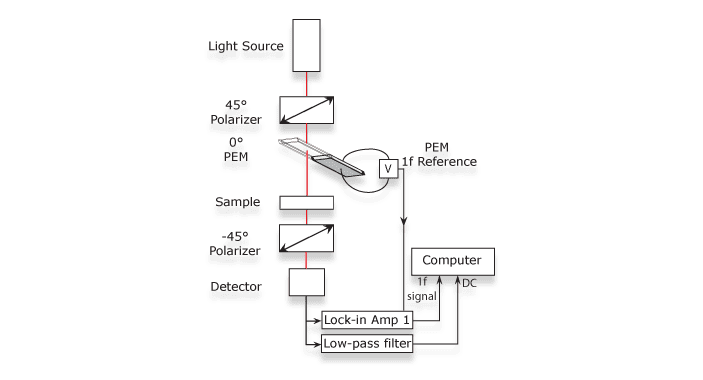Linear Birefringence
The presence of residual low-level linear birefringence in an optical component affects its quality, especially when used in polarization related instruments. The PEM can be applied to the measurement of linear birefringence of transparent optical materials in several different ways.
ONE EXAMPLE OF THE COMMON SETUPS

EQUATION

B: linear birefringence of a sample
I1f: 1f signal
IDC: DC signal
A0: PEM’s retardation setting
J0(A0): the 0th order Bessel function
J1(A0): 1st order Bessel function
In practice, due to different amplification gains being used for the AC and DC signal channels, a calibration with a known birefringence is normally used.
APPLICATIONS
In optical materials; laser optics; quality control of optics, glasses, and thin films
PEMs
I/FS50 with NIO
I/FS50 with ARC
OTHER INSTRUMENTATION
Exicor® Birefringence Measurement Systems
FURTHER READING
J. C. Kemp, Basic Laboratory set-up for various measurements possible with the photoelastic modulator, Application Note, Hinds Instruments, Inc. (1975)
S. J. Johnson, “Simultaneous dichroism and birefringence measurements of sheared colloidal suspension in polymeric liquids,” Ph. D thesis, Stanford Univ. (1985).
Contact us to see how Hinds Instruments works with our customers to solve complex metrology problems.